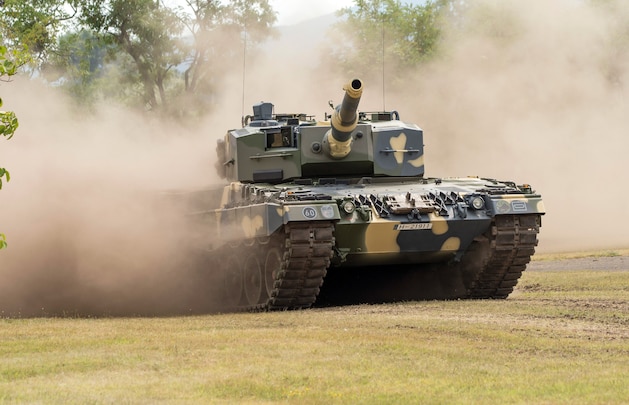Ralf Raths, Director of the German Tank Museum in Munster, describes both main battle tanks as “relatively the same”. One reason: They emerged from a joint project. According to Raths, they have their roots in the Kampfpanzer 70, which was developed by the USA and Germany in the mid-1960s during the Cold War.
This is probably one of the reasons why there are differences in the details. Overall, operating a battle tank is complex, but “not rocket science,” Raths explains. He sees armor protection, mobility and firepower in both models in an “extremely successful balance”.
The Bundeswehr describes the Leopard 2 as a “tracked predator” and has been using the main battle tank in various variants since 1979. Armed with a 120 millimeter cannon, the latest variant allows four soldiers on board targets at a distance of up to 5000 meters fight. Over the years, the tracked vehicles developed by the armaments company Krauss-Maffei Wegmann received increasingly thick armor. The current A7V version, weighing around 64 tons, reaches a top speed of 63 kilometers per hour with 1500 hp diesel engines.
The German army is to receive a total of 104 Leopard 2 A7Vs over the next three years. Older tanks are retired or given to other countries. This includes models of the A4 type or the previous generation of Leopard 1.
According to the annual report “Military Balance 2022” of the International Institute for Strategic Studies, Germany has more than 300 Leopard 2 tanks: 225 pieces of the A5/A6 series and 59 of the A7/A7V series. 55 Leopard 2 A4 are stored.
The specifications of the M1 Abrams read almost like a copy of the Leopard 2. A 120 mm gun has been on board since the M1A1 model.
The four occupants are protected from attack by steel-clad armor with depleted uranium. With 1500 hp under the hood, the Abrams, which weighs up to 74 tons depending on the model, reaches a top speed of almost 68 kilometers per hour.
The M1 Abrams has been available since 1980 in three main variants. After the M1 came the M1A1 and finally the M1A2. According to Military Balance, the United States owns more than 6,000. In detail: 650 of the type M1A1 and almost 2000 M1A2 in various versions, plus a further 3450 stored units of both models.
The difference between the Leopard and the Abrams is in the details: while the German tank consumes up to 530 liters of diesel per 100 kilometers, according to the manufacturer, the M1 Abrams is powered by a gas turbine. According to the Pentagon, three gallons of kerosene are used per mile – that’s 700 liters per 100 kilometers.
Also, the two tanks differed in potential top speed. While the German tank reaches a maximum of 63 kilometers per hour, the US model is up to five kilometers per hour faster at the top.















